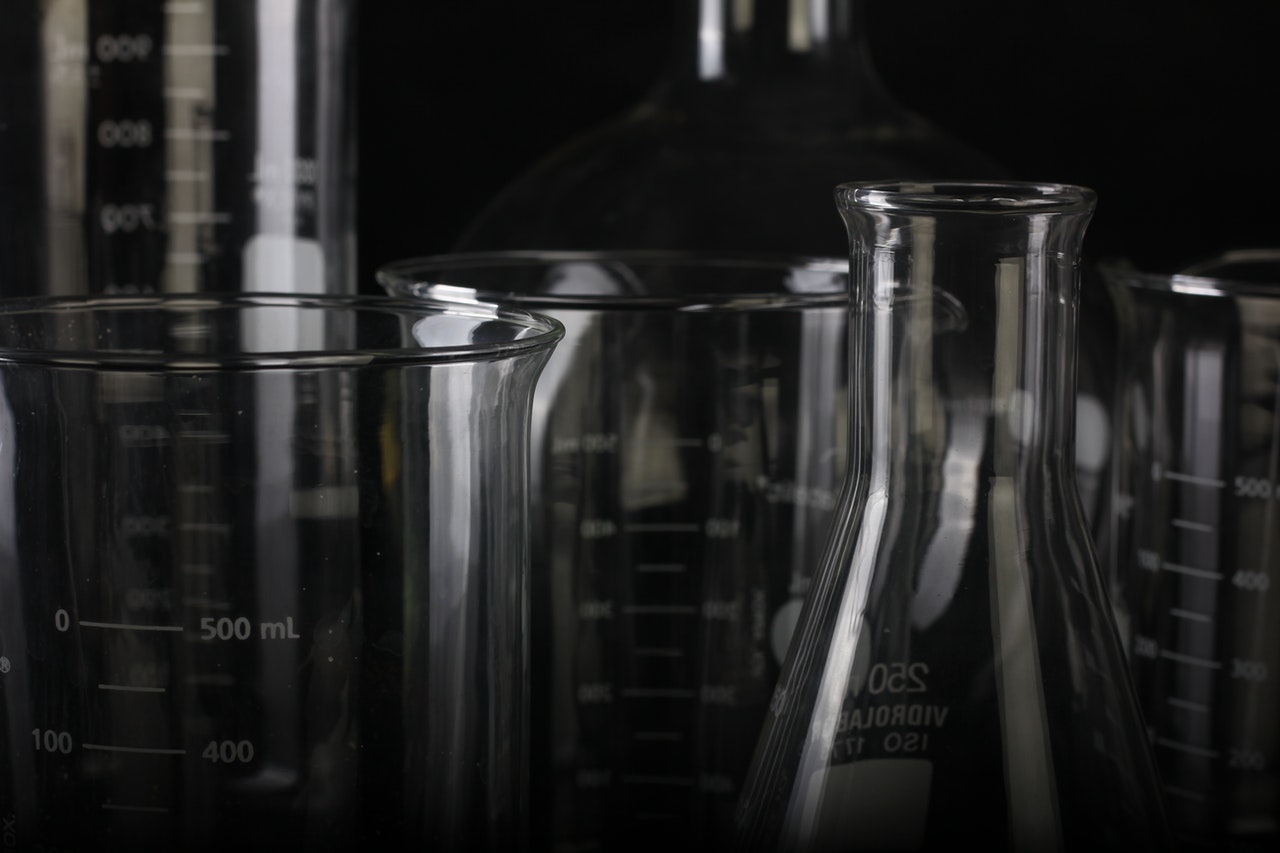Do you get tonsil stones, but don’t want to make a trip to see a doctor that will give you some generic advice?
Food-grade hydrogen peroxide might be a simple and cheap way to get rid of it on your own. While most people know that hydrogen peroxide is an excellent oral rinse for killing bacteria, freshening breath, and removing debris from your mouth, did you know that it is one of the best at-home treatments for dissolving tonsil stones?
To use hydrogen peroxide for tonsil stones, gargle with a peroxide-water solution every time you eat, and rinse your mouth with it daily to kill the anaerobic bacteria within tonsil stones. Make sure that it is a food-grade peroxide or you risk damaging your tonsils or throat.
or you risk damaging your tonsils or throat.
Let’s talk more about how hydrogen peroxide works to dissolve, dislodge, and prevent tonsil stones.
In this article, you can find all the steps you need to take to treat your tonsil stones with hydrogen peroxide so that you can say goodbye to bad breath, a painful throat, and those pesky white throat pearls that form in your tonsils.
Why Is Hydrogen Peroxide Good for Tonsil Stones?
You can find hydrogen peroxide almost anywhere, and it has hundreds of uses, such as whitening teeth, cleaning bathrooms, treating cuts, removing the buildup of earwax, and removing tonsil stones.
Hydrogen peroxide is an acidic antiseptic and anti-inflammatory agent, which means that it kills bacteria, prevents infections, and reduces swelling. But it is also one of the mildest antiseptics, so it won’t burn like salt and alcohol, even if you put it on an open wound. It also breaks down mucus
is an acidic antiseptic and anti-inflammatory agent, which means that it kills bacteria, prevents infections, and reduces swelling. But it is also one of the mildest antiseptics, so it won’t burn like salt and alcohol, even if you put it on an open wound. It also breaks down mucus , which is one reason why it is such a highly recommended oral rinse.
, which is one reason why it is such a highly recommended oral rinse.
Hydrogen peroxide works because it releases oxygen when you expose it to the open air. It will usually form a thick foam with tons of tiny oxygen bubbles that expand and push bacteria off your skin. But what does that have to do with tonsil stones?
because it releases oxygen when you expose it to the open air. It will usually form a thick foam with tons of tiny oxygen bubbles that expand and push bacteria off your skin. But what does that have to do with tonsil stones?
What Are Tonsil Stones?
Tonsil stones, or tonsilloliths , are often caused by a buildup of dead cells, food, mucus, and anaerobic bacteria in the craters and crevices of your tonsils. The bacteria that cause tonsil stones to grow can only survive when buried underneath built-up food, mucus, and dead cells where there is no oxygen flow. Since these bacteria can only grow in spots where there is no oxygen, hydrogen peroxide effectively eliminates them.
, are often caused by a buildup of dead cells, food, mucus, and anaerobic bacteria in the craters and crevices of your tonsils. The bacteria that cause tonsil stones to grow can only survive when buried underneath built-up food, mucus, and dead cells where there is no oxygen flow. Since these bacteria can only grow in spots where there is no oxygen, hydrogen peroxide effectively eliminates them.
What Happens to Tonsil Stones When You Rinse With Hydrogen Peroxide?
When you rinse your tonsil stones with hydrogen peroxide, it does three things:
- The oxygen it releases kills the anaerobic bacteria surrounding your tonsil stones, eliminating bad breath, decreasing the possibility of infection, and weakening the stone.
- When it foams, it loosens the stone, as well as the food, dead cells, and bacteria, potentially removing the entire tonsil stone.
- It breaks down mucus, softening the stone and dislodging it from your throat.
Treating your tonsil stones with hydrogen peroxide can weaken them, remove debris from the folds of your tonsils, and kill the bacteria that cause them to grow.
Whether you want to prevent tonsil stones, remove them, or treat your tonsils after removal, hydrogen peroxide is your best bet for fighting infection and keeping debris out of your throat.
A Step-by-Step Guide to Treating Tonsil Stones With Peroxide
If you are ready to say goodbye to your tonsil stones, hydrogen peroxide is one of the best treatments.
While the most common treatment for tonsil stones is gargling with hydrogen peroxide, there are several other ways to use it to treat, eliminate, and prevent tonsilloliths.
It is important to remember only to use food-grade peroxide (Amazon) for your tonsil stones since traces may remain in your mouth after rinsing.
(Amazon) for your tonsil stones since traces may remain in your mouth after rinsing.
Gargle With a Hydrogen Peroxide and Water Solution
Gargling with hydrogen peroxide and water solution is an excellent way to prevent and remove tonsil stones. You’ll also want to use hydrogen peroxide rinse to treat your throat after removing your tonsil stones to ensure that all of the bad bacteria are gone.
To gargle with hydrogen peroxide:
- Prepare your solution. In a cup, mix one part food-grade 3% hydrogen peroxide with one part water.
- Gargle. Swish the solution in your mouth, gargling it deep in your throat for at least 90 seconds. The longer you gargle, the better, so keep it up for as long as you can. If you are using this method to remove your tonsil stones, you may want to do this two times in a row to give the peroxide more time to break down the mucus.
- Rinse your mouth with water. After you finish with the peroxide solution, rinse your mouth with water to finish removing the debris that the peroxide dislodged. Swish the water in your mouth vigorously for around 60 seconds, ensuring that you gargle it in the back of your throat.
- Repeat every time you eat. To prevent further buildup of food and bacteria, rinse your mouth with the hydrogen peroxide solution and water every time you eat until your symptoms cease.
Rinsing with peroxide is a simple, effective way to soften, loosen, and prevent most tonsil stones, but if your stone is large, you may not see success right away.
Every time you gargle, you are softening the mucus in your tonsil stone, killing the bacteria that give you terrible breath, and flushing away little bits of the stone. The more you gargle, the better your results will be.
Spot-Treat With a Swab
If you don’t want to gargle, or you want to treat your tonsil stone directly, you can use a cotton swab to apply hydrogen peroxide onto your tonsil stones. This method is effective on smaller tonsil stones, and it is also a great way to treat your tonsils after you have already removed the stone.
To treat your stones with a swab:
- Prepare a peroxide solution. Mix one part food-grade 3% hydrogen peroxide with one part water in a clean cup.
- Dip your swab in the solution. Stir the solution around a bit with a sterile cotton swab and allow it to soak up as much of the solution as possible.
- Apply gently. Being careful not to use too much pressure, massage your tonsil stone with the soaked cotton swab. Ensure that you cover the edges of the tonsil stone with the peroxide solution since this will help break down the mucus that connects the stone to your tonsil.
- Don’t eat or drink anything. To ensure the solution stays on your tonsil stone, don’t drink or eat anything for at least an hour after application. After around an hour, gargle with water to remove any loosened debris and excess peroxide.
Using the cotton swab method is not as effective as the gargling method, but it can be helpful if you want to leave the peroxide on your tonsil stones for a prolonged period. Using both ways will often loosen and remove the stones, so if you are patient and persistent, you will soon be stone-free.
Throat Spray
If you have a strong gag reflex or struggle to gargle liquids in your throat, you can spray your hydrogen peroxide solution straight into your throat. Spraying is an excellent way to directly treat your tonsil stones with hydrogen peroxide without rubbing your tonsils or causing extra irritation.
You will need some food-grade 3% hydrogen peroxide, water, and a clean, new spray bottle.
To make and use your own peroxide throat spray:
- Sanitize your spray bottle. Before using your spray bottle, clean it with soap and water, and rinse it with a food-grade antibacterial agent like vinegar, alcohol, or hydrogen peroxide. Rinse well and run clean water through the spray mechanism to ensure that it is sanitary.
- Mix your solution. Mix one part hydrogen peroxide with one part filtered or distilled water, screw on your spray cap, and shake the bottle.
- Spray your throat. To spray your tonsil stones, stick your tongue out and say “ah.” Spray directly in the back of your throat two or three times and let the solution sit on the back of your throat, being careful not to swallow any of it.
- Rinse. After letting the solution sit in the back of your throat, rinse your mouth with water, vigorously swishing the water around.
- Store your spray. Hydrogen peroxide is sensitive to light, which is why it is commonly sold in a dark-brown bottle (but don’t use that stuff if it isn’t specifically food grade). Store your bottle in a dark, cool place when not using.
If you are trying to get rid of your tonsil stones, repeat the spraying process two or three times a day. The more often you repeat the process, the sooner you will see positive results.
Conclusion
Treating tonsil stones can feel impossible if you don’t know the powers of hydrogen peroxide. Hydrogen peroxide eliminates bad breath, breaks down tonsil stones, loosens debris in your mouth, disintegrates mucus, and disinfects your throat.
Whether you gargle, swab, or spray hydrogen peroxide, using it is sure to eliminate and prevent the formation of tonsil stones, leaving your throat clear and comfortable as long as you remember to rinse.
I also have another gargle recipe for melting tonsil stones like butter with vinegar, so if this one isn’t working for you then definitely check it out!


